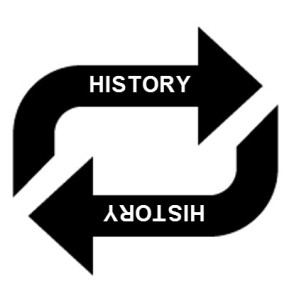How is the term instructional media defined? Why are teachers chalkboards, and textbooks excluded from the definition?
The term instructional media has been defined as the physical means via which instruction is presented to learners (Reiser & Gagnt. 1983) Teachers chalkboards and textbooks were the three primary means of instruction before the twentieth century. To clearly describe the history of media, these three means are excluded.
One example in events or movements are related to current ideas or practices associated with instructional media:
School Museums: Museums served as the central administrative units for visual instruction by distribution of portable museum exhibits, stereographs, slides, films, study prints, charts, and other instructional materials.
After this exhibitions spread, a number of proffesionals rebelled against the notion that the books are only information presenters and they indicatd that teachers should be viewed on an equal footing with instructional media, as just one of many possible means of presenting instruction, and teachers should not be given sole authority for deciding what instructional media will be used in classrooms.
The Audiovisual Instruction Movement: Researchers thought that Audiovisual materials were valuable for their ability to present concepts in a concrete manner. They thought radio would revolutionize education. But unfortunaltely radios and audiovisual materials didn’t have much impact on education
World War II: War forced people to learn and adapt quickly and a wide variety of other audiovisual materials and equipment were employed in the military forces and in industry during World War II. Devices that were used extensively included overhead projectors, which were first produced during the war; slide projectors, which were used in teaching aircraft and ship recognition: audio equipment, which was used in teaching foreign languages: and simulators and training devices, which were employed in flight training (Olsen & Bass, 1982. Saettler, 1990).
Post World War II Developments: The audiovisual devices helped to train a lot of people in a short time during the war and it gained a lot of attention. A lot of media researchers conduected a research and reached a conclusion that students learn equally well in both live instructed lessons and other media respurcces. Some have argued that researchers should focus on the attributes of media (Levie & Dickie, 1973), others have s uggested an examination of how media influence learning (Kozma, 1991, 1994), andothers have suggested that the research focus should be on instructional methods, rather than on the media that deliver those methods (Clark, 1983, 1994).
uggested an examination of how media influence learning (Kozma, 1991, 1994), andothers have suggested that the research focus should be on instructional methods, rather than on the media that deliver those methods (Clark, 1983, 1994).
Communication Theories: To give the most information in most effective vay, a lot of theories were studied to make communication process better.
Why does history repeat itsef? Does this notion seem to apply to instructional films, instructional television and computers? If so, in what way(s) does it apply?
 It has been noted that as each new medium comes along, history repeats itself. This notion applies to instructional films, television and computers(until 1995) because at first, these instructional medias seemed to facilitate learning to a great extent; yet, they all eventually had short lives and also had minimal impact on educational practices. The reason why their impacts on instructional practices faded in the course of time was the fact that they had learners interact with only instructional content, NOT with their instructor and learners.
It has been noted that as each new medium comes along, history repeats itself. This notion applies to instructional films, television and computers(until 1995) because at first, these instructional medias seemed to facilitate learning to a great extent; yet, they all eventually had short lives and also had minimal impact on educational practices. The reason why their impacts on instructional practices faded in the course of time was the fact that they had learners interact with only instructional content, NOT with their instructor and learners.
How historical events are related to current ideas or practices associated with the field of instructional design:
World War II: During the war, a large number of psychologists and educators who had training and experience in conducting experimental research were called on to conduct research and develop training materials for the military services. These individuals exerted considerable influence on the characteristics of the training materials that were developed, basing much of their work on instructional principles derived from research and theory on instruction, learning and human behaviour.
The Programmed Instruction Movement: In 1954, B.F. Skinner’s article entitled The Science of Learning and Art of Teaching began a minor revolution in the field of education. Skinner described his ideas about the requirements for increasing human learning and the desired characteristics of effective instructional materials.
The Behavioral Objectives Movement: In 1962, Robert Mager, wrote Preparing Objectives For Programmed Instruction. The book describes how to write objectives that include a description of desired learner behaviours,the conditions under which the behaviours are to be performed and the standards by which the behaviors are to be judged. Many present day adherents of the instructional design process advocate the preparation of objectives that contain these three elements.
The Criterion-referenced Testing Movement: One of the important development of the instructional design process is the emerge of criterion referenced testing. Until that time, most test called norm referenced test were designed to spread out the performance of learners. In contrast the criterion referenced test is intended to measure how well an individual can perform a particular behavior or a set of behaviors.
How interest in instructional design waxed and/or waned in the following sectors during the 1970s and 1980s:
- Academia
In academia, many instructional improvement centers were created during the first half of the decade with the intent of helping faculty use media and instructional design procedures to improve the quality of their instruction (Gaff. 1975; Gustafson & Bratton, 1984). Moreover, many graduate programs in instructional design were created (Partridge & Tennyson, 1979; Redfield & Dick. 1984; Silber. 1982).
- Business and Industry

In business and industry, many organizations, seeing the value of using instructional design to improve the quality of training, began adopting the approach (cf. Mager, 197: Miles, 1983).
- The U.S. Military
In 1975, several branches of the U.S. military adopted an instructional design model (Branson et al, 1975) that was intended to guide the development of training materials within those branches.
- The International Arena
Internationally, many nations, such as South Korea. Liberia. and Indonesia, saw the benefits of using instructional design to solve instructional problems in those countries (Chadwick. 1986; Morgan, 1989). These nation- supported the design of new instructional programs, created organizations to support the use of instructional design, and provided support to individuals desiring training in this field. Many of these developments were chronicled in the Journal of Instructional Development, a journal that was first published during the 1970s and that was the forerunner to the development section of Educational Technology Research and Development.
Public Education in the United States
In the public school arena, some curriculum development efforts involved the use of basic instructional design processes (e.g., Spady, 1988), and some instructional design textbooks for teachers were produced (e.g., Dick & Reiser, 1989: Gerlach & Ely, 1980; Sullivan & Higgins, 1983). However, in spite of these efforts, evidence indicated that instructional design was having little impact on instruction in the public schools (Branson & Grow, 1987; Burkman, 1987b; Rossett & Garbosky, 1987).

Leave a comment